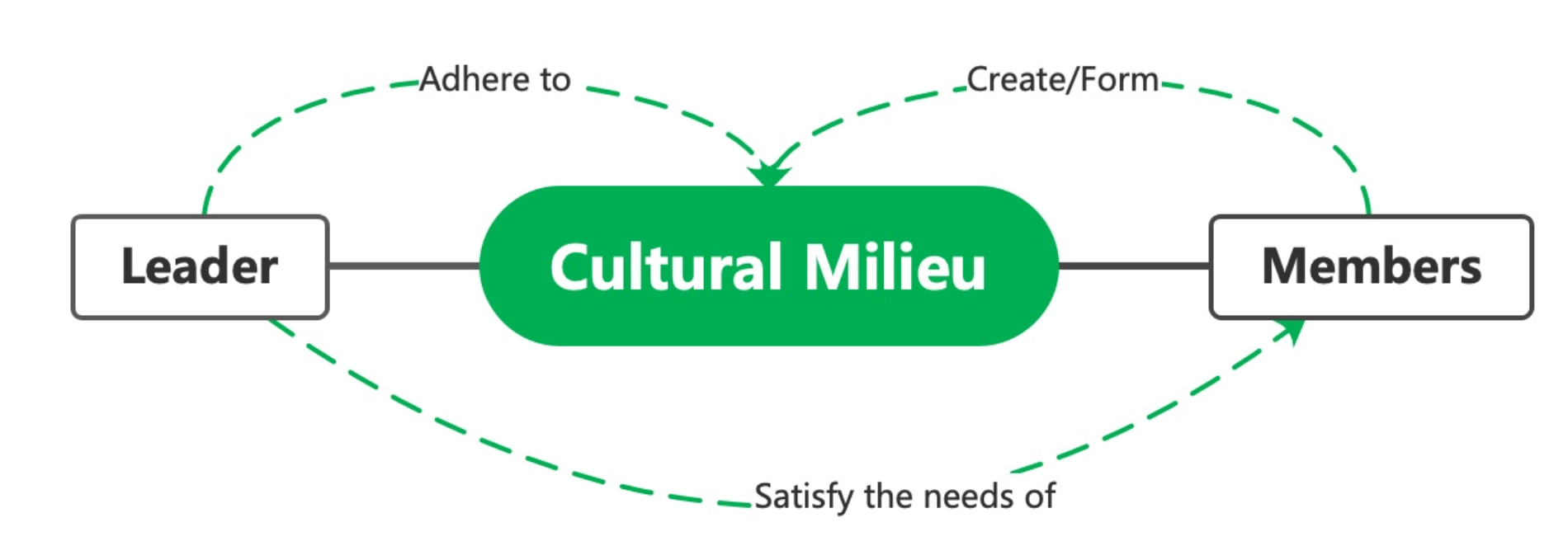What I remember most about last summer was the wonderful mornings. I would get up at 7 am, grab my basketball, and head to the woods to practice. I would drill the moves my coach taught me until I could do them 20, 50, 100 times in a row. After completing my “KPI,” I’d head home drenched in sweat.
A large part of my drive for doing this was, as utilitarian as it may sound, to become the captain of my girls’ basketball team.
Two weeks into the new semester, our coach rounded us up after one after-school practice session and announced that he had picked out the new captains for the team. I held my breath while waiting for my name, but it never came. Two other girls were picked, two other girls who, let’s be honest, didn’t play as well as I did.
My massive tower of anticipation instantly crumbled. After a few days of second-guessing myself, accompanied by tears, I decided to ask the coach why he thought I wasn’t up for the job.
“They just seem to have more leadership than you.” This answer made no sense to me.
“How so?”
“They’re… more extroverted, let’s just say.”
There were a million questions at the tip of my tongue. I am already 93% extroverted (according to MBTI), but the other two girls, by chance, are even more extroverted than me. Should this minute difference be what disqualifies me as a good leader?
And most importantly, does extraversion define qualified leaders? If not, what does?
Because this issue speaks particularly loudly to me, I decided to conduct sociological research on this topic. My research title? Effective Leadership: How leadership in student organizations is affected by corresponding cultural preferences.
Some existing research studies focus on leadership effects in adult organizations like cross-country businesses, government facilities, or social activity groups. However, these studies are directed toward something other than student organizations. Different from adults, teenagers often weigh their sense of collective belonging heavily.
The feeling of belonging plays an essential role in validating adolescents’ developing sense of identity (Brechwald & Prinstein, 2011; Savin-Williams & Berndt, 1990). Therefore, it’s not suitable to equate them with adults when considering their behaviors in organizations. Helping high school students feel unity in student organizations, whether in clubs or sports teams, has strong educational value. The result of this research can potentially suggest how to elect an optimal leader, enhancing organizational unity and satisfaction.
The Two Leaders
In their study about leadership in 1999, John and Srivastava separated leaders into two kinds: narcissistic ones and humble ones. They used five main factors to tell them apart, called the “Big Five.” Try to use the descriptions below to identify which exact type you belong to.
Self-cognition Narcissistic leaders tend to lead based on self-awareness that they are superior to the rest of the team. This leads to a relatively inflated cognition that makes them vulnerable to negative feedback. In contrast, Humble leaders view themselves as equal to the rest of the team (e.g., Ouimet, 2010; Owens & Hekman, 2012).
Let us slide into your dms 🥰
Get notified of top trending articles like this one every week! (we won't spam you)Attitude:
Narcissistic leaders are usually passionate, socially skilled, and more likely to be extroverts. Humble leaders are better at listening respectfully and helping individual members (e.g., Chatterjee & Hambrick, 2007; Owens et al., 2013).

Take the Quiz: Which Female Character Trope Do You Belong To?
Whether it's in film, TV, or literature, you've likely come across these female character tropes. Take this quiz to discover which one best matches...
Motive:
What motivates a narcissistic leader to lead may be the desire for individual development or achievement, while humble leaders are pushed to lead by their belonging to the team.
Emotions:
Narcissistic leaders are more likely to be emotional and sensitive to negative feedback, which triggers their emotional anxiety; humble leaders excel at remaining positive and digesting setbacks (e.g., Morf & Rhodewalt, 2001; Owens & Hekman, 2012).
Behavioral Traits:
Narcissistic leaders tend to lead aggressively and passionately, rarely doubting their dominant choices; Humble leaders remain low-key and provide usually obscured value (e.g., Brunell et al., 2008; Exline et al., 2004).
*A side note on how I conducted my research: To identify the leadership types of the student organizations, I selected 15 student organizations and sent questionnaires to their leaders. The questions contained ten questions that addressed the “Big Five” perspectives. If more than 50% of the leaders’ answers were narcissistic, they probably were.
Next, I interviewed 2 to 3 members from each student organization. The questions I asked were attempts to understand the correlation between the leadership types and the cultural dynamics of each organization.
The Three Holy Factors: what makes a leader
Figure 1. The Three-Factor Diagram
Source: personal research result
My research result can be summarized as a three-factor diagram suitable for every type of student organization.
To explain, it reveals a multi-faceted relationship inside an organization. Since every member stepped into the organization with a goal in mind, their small orientations joined up to form the cultural preference of the whole group. This preference constructs the cultural milieu, which consists of the group dynamics and atmosphere of that group. The busy leader must ensure the members are getting what they want and, therefore, adhere to the milieu.
Now, if that sounds overly vague, let us narrow it down more specifically. In this study, I divided the whole broad range of student organizations into three types we can chew: Contest-oriented ones (the basketball/volleyball/football/soccer team, the Biology Olympiad team), Creation-oriented ones (the musical club aiming to produce the play, Hamilton, the book recommendation club aiming to write five social media articles every two weeks), and Administration-oriented ones (our beloved student council.)
It is excellent if you’re interested in any of them specifically because you are a member of that kind of organization, so feel free to scroll down to the explanation of the one that suits your needs!
Contest-oriented Organizations
To: competitive people ambitious for the WIN!!

Figure 2. Diagram of Contest Organizations
Source: personal research result
Interestingly, while it’s been proven that students in sports teams are usually emotionally ambitious, aggressive even, their leaders perform better with the opposite trait. It makes perfect sense for student-athletes to be aggressive because that drives them to aim for the best and win. However, I find that a sports team captain should be more emotionally stable instead.
Without a fair share of channeling, the aggressive emotions would likely backfire and contribute to self-doubt. A calm and stable leader will provide sufficient support to his/her members, ensuring that ambition is used primarily in games.
For example, one of the girls’ basketball team members reflected in the interview:
“I can feel that she’s very concerned about our emotions. Sometimes I was pretty hesitant when making shots during games because I wasn’t confident enough. After practices, she would notice my doubts and come over, telling me it’s okay and I need to be more obstinate.”
The naturally counter-intuitive fact is that an aggressive student organization needs a partially humble leader to channel its true potential. At the same time, it’s undeniable how much professional skills matter in the competition. More than one member reflected how the scoring ability of their leader is the reason they’re trusted in the first place. Without skills, style won’t matter. When asked to judge the leader regardless of her professional skills, one of my interviewees surrendered:
“If I have to make a distinction, it might be that she’s more persuasive? But at the end of the day, her skill for persuasion is still based on our knowledge of her superior basketball skills. Her skills are primarily why we’d perceive her as being a good leader at all, regardless of her leadership model.”
Creation-oriented Organizations
To: creative people brewing up a PRODUCTION!!

Figure 3. Diagram of Contest-oriented Organizations
Source: personal research result
This organizational type takes up roughly 70% of all student organizations. Typical musical clubs, volunteer groups, and literature clubs all have the same goal of producing some concrete outcome and so count as creation-oriented organizations.
What’s notable about this organizational type is how the members can be divided into two types. Core members, who are super-attentive to the progress of the production the team is after, as well as the core source of creativity, and marginal members, whose duties are usually highly-replaceable and care much more about how much attention they receive. To address these two types of members, leaders can embrace two models accordingly.
If productivity is the initial concern of the leader, he/she should be ready to accept not being able to tend to the emotions of each member. While working with the core members, the production will undoubtedly be efficient. However, suppose the leader sees it fit to construct a whole big family out of the organization. In that case, they can treat members humbly, like sports leaders, at the risk of lowering productivity.
Of course, the distinction of different leadership styles brings diverging opinions. For example, in the student musical club, it’s reflected that the absenteeism problem is sometimes pretty severe. The club president is a humble leader, as she would call members to come back to practices nicely. A lead actress of the organization responded to this with disagreement:
“The most infuriating thing was watching her try to convince members to come back to practice. She would be way too nice to them. She persuades instead of commands. Sometimes this really held back on the whole the speed of the whole production. I think a leader should be more serious when dealing with this issue.”
However, one of the stage staff reflected on the same issue:
“She is so nice to every member; it never feels like she’s demanding you to do something. It’s easy for me to accept her requests. She likes to call me ‘baby’ and that makes me feel good.
That’s exceptional because I’m not even one of the actresses, I’m in charge of props. You could say I was a pretty marginal member. But she would treat me the same as others, like asking me to move some props or run some errands in a very gentle way.”
That’s why you must decide your priority as a leader of a creation-oriented organization and adjust your behaviors accordingly. Of course, partnering up with someone who complements you is always great. This way, you can sustain productivity while making the organization feel like a family.
Administration-oriented Organizations
To: ambitious people who just want a better resumé…

Figure 4. Diagram of Administration-oriented organizations
Source: personal research result
This kind of student organization is the most simplistic in terms of structure. The pure goal of most students who attend is to put something on their resumé. In order to create a resumé showing abilities of execution and leadership, students aren’t coming here to attain emotional support. Instead, they’re aiming to achieve and accomplish.
In this case, leaders are way better off being narcissistic leaders. A crucial factor is their competence, enabling them to accomplish tasks. Nevertheless, to be elected in the first place, they must possess a certain level of personal charisma, including confidence and social skills.
The most typical reflection coming from a student council member would be:
“Throughout the course of this whole year, everyone is just trying to participate in more events than others. Because this will likely increase our chances of being elected next year. Students who have the will to join the student council are usually ambitious for a better resumé, so they’re not counting on the organization to give them emotional support.”
Conclusion:
The purpose of this study is to find how the cultural preferences of a specific organization affect the demands of leadership, including how the cultural milieu of an organization is initially formed by its members. We discovered the optimal leadership styles that suit the operation of different categories of student organizations. Our findings suggest that a certain organization is cultural milieu depends on the goals members hope to achieve when they step into an organization.
This, in turn, affects their need for attention in this organization, determining the leadership style they approve of. This multi-faceted relationship of demand is most clearly shown in Figure 1.
Furthermore, while adhering to an organization’s cultural milieu needs, leaders become a mix of different leadership models. So, although this study initially uses narcissistic leaders and humble leaders to make a distinction, it’s found that leaders might eventually choose to adopt traits from both sides, depending on members' needs.













